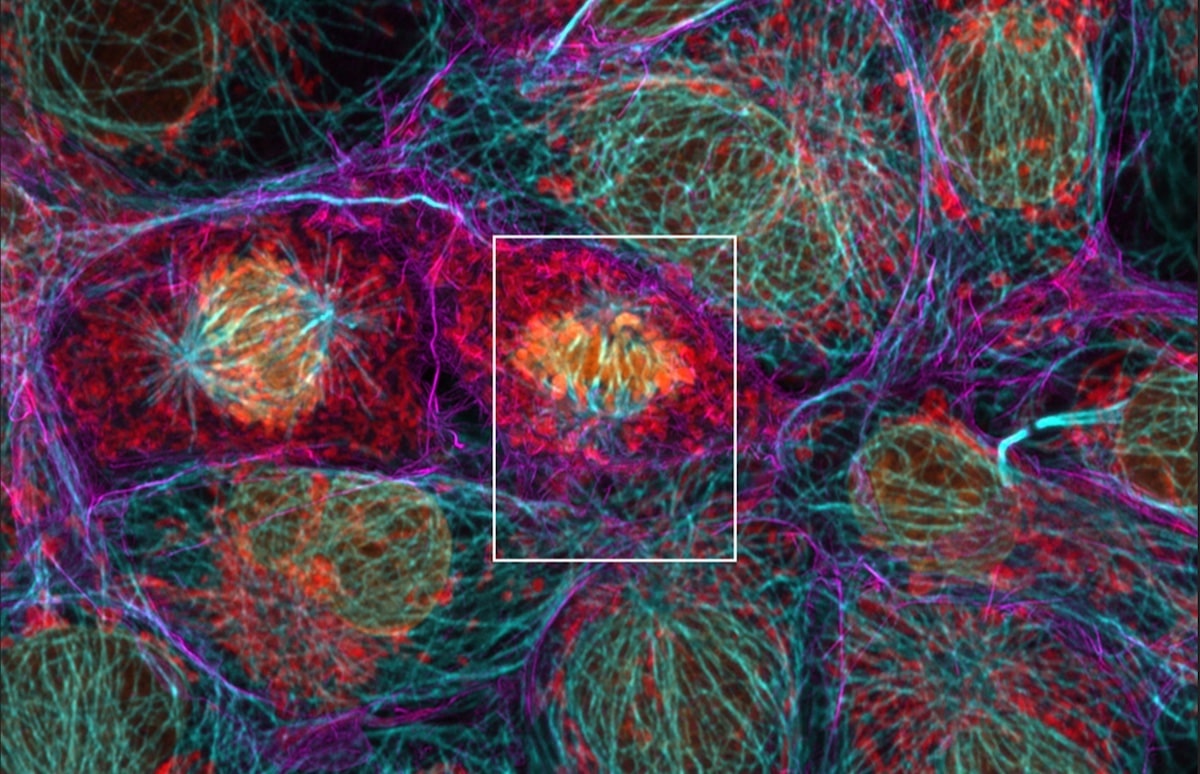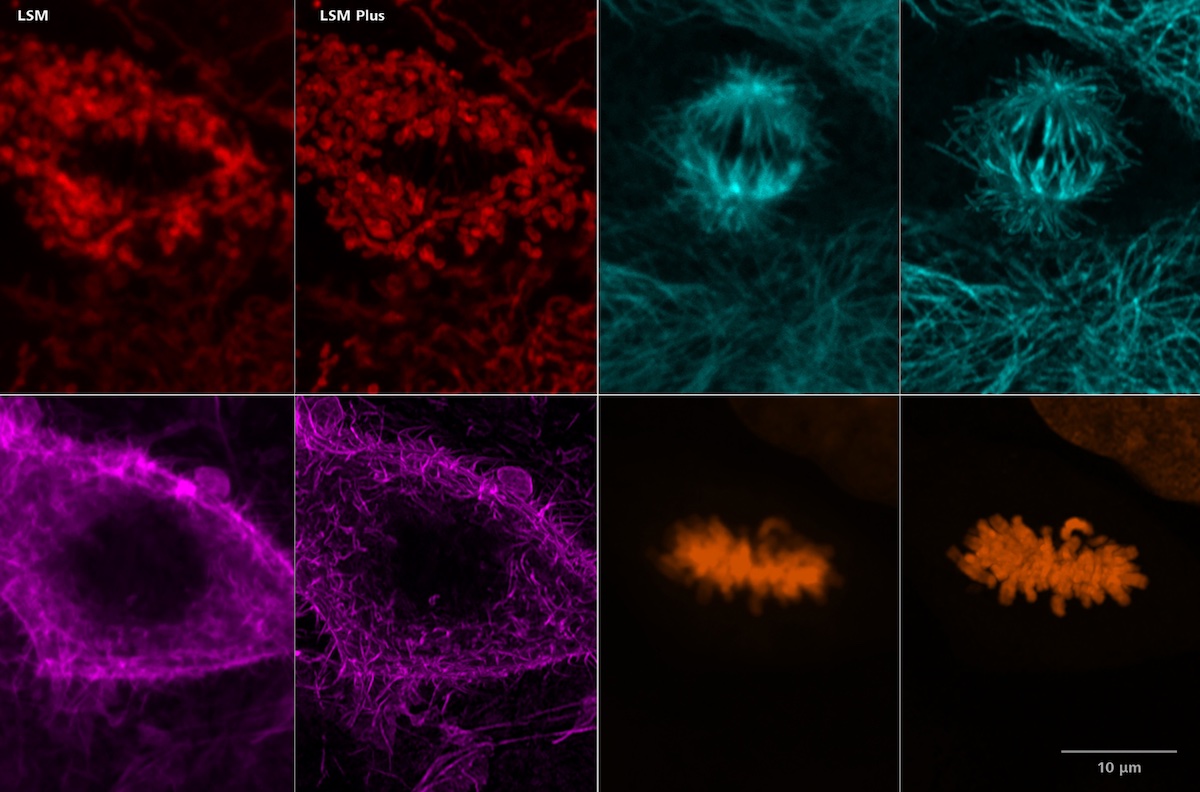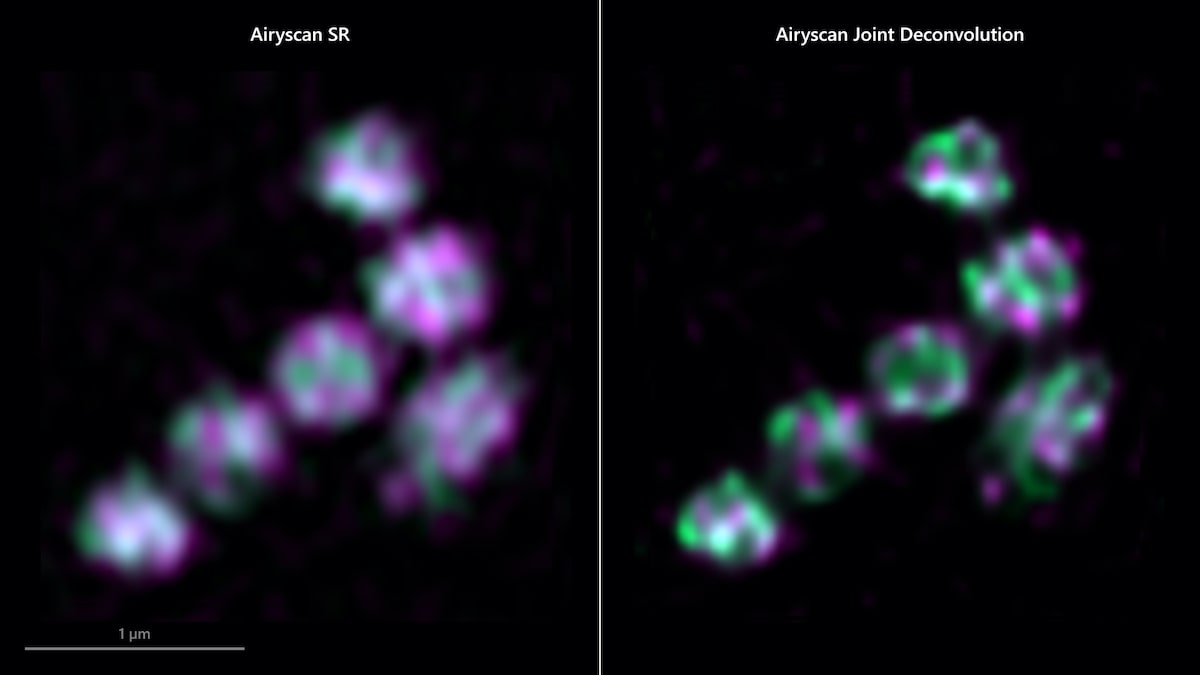Members Login

Channels
Special Offers & Promotions
Improved Image Quality and Resolution for all ZEISS Laser Scanning Microscopes

ZEISS LSM Plus and ZEISS Airyscan Joint Deconvolution introduced
ZEISS introduces two new software functionalities: With ZEISS LSM Plus and ZEISS Airyscan Joint Deconvolution, users achieve better results in confocal microscopy.
Laser scanning microscopes (LSMs) are the multifunctional high-end microscopes in every imaging facility, valued as much for their instant, high-quality imaging of optical sections as for their ease of use and application flexibility. ZEISS LSMs provide a wide range of detection modes with highest sensitivity and spectral flexibility for multi-fluorescent experiments. ZEISS LSM Plus and ZEISS Airyscan Joint Deconvolution significantly improve the data quality in confocal imaging. This enhancement is independent of the chosen detector, imaging mode, and emission range.
ZEISS LSM Plus: Improving the whole confocal experience
The linear Wiener filter deconvolution of the new ZEISS LSM Plus option is based on the time-tested super-resolution processing of ZEISS Airyscan. It can be applied to data of any confocal imaging mode – including spectral, near infrared and multiphoton microscopy – with next to no interaction, ensuring reliable quantitative results. Users benefit from an enhanced signal-to-noise ratio at high acquisition speed and low laser power – particularly useful for live cell imaging of delicate samples. For samples that are not too light sensitive and therefore allow the pinhole of the LSM to be closed, more spatial information and even greater resolution enhancement can be obtained.

ZEISS Airyscan Joint Deconvolution: 32 views mean more information
ZEISS Airyscan 2 is an area detector with 32 circularly arranged detection elements. Each of these acts as a small pinhole with a slightly different view on the sample, providing additional spatial information. With the introduction of ZEISS Airyscan Joint Deconvolution, this additional spatial information can now be leveraged to reduce the distance that can be resolved between two points down to 90 nm. Super-resolution experiments benefit from an improved separation of single or multiple labels. Users immediately recognize the significance for their research: “When we imaged endoplasmic reticulum and mitochondria and saw their very fine details after applying ZEISS Airyscan Joint Deconvolution, we thought this is just super cool. The new option could be integrated within our imaging protocols very easily. We were amazed at how quickly the images were processed, which helped us make decisions while we were still imaging”, says Dr. Kelly Subramanian, Post-Doctoral Scholar, Department of Molecular and Cellular Biology at UC Davis, USA.
Users benefit from ease of use
These two new options enable users to reliably gather more information for all confocal experiments while increasing productivity. Particularly, imaging facilities with multiple users benefit from seamlessly integrated, easy-to-apply improvements – without any expert knowledge or extra effort. The existing ZEISS LSM 900, including ZEISS Celldiscoverer 7, and ZEISS LSM 980 microscope systems can be upgraded accordingly.

Learn more about LSM Plus and Airyscan jDCV
About ZEISS
ZEISS is an internationally leading technology enterprise operating in the fields of optics and optoelectronics. In the previous fiscal year, the ZEISS Group generated annual revenue totaling 6.3 billion euros in its four segments Semiconductor Manufacturing Technology, Industrial Quality & Research, Medical Technology and Consumer Markets (status: 30 September 2020).
For its customers, ZEISS develops, produces and distributes highly innovative solutions for industrial metrology and quality assurance, microscopy solutions for the life sciences and materials research, and medical technology solutions for diagnostics and treatment in ophthalmology and microsurgery. The name ZEISS is also synonymous with the world's leading lithography optics, which are used by the chip industry to manufacture semiconductor components. There is global demand for trendsetting ZEISS brand products such as eyeglass lenses, camera lenses and binoculars.
With a portfolio aligned with future growth areas like digitalization, healthcare and Smart Production and a strong brand, ZEISS is shaping the future of technology and constantly advancing the world of optics and related fields with its solutions. The company's significant, sustainable investments in research and development lay the foundation for the success and continued expansion of ZEISS' technology and market leadership. ZEISS invests 12 percent of its revenue in research and development – this high level of expenditure has a long tradition at ZEISS and is also an investment in the future.
With over 34,000 employees, ZEISS is active globally in almost 50 countries with around 30 production sites, 60 sales and service companies and 27 research and development facilities. Founded in 1846 in Jena, the company is headquartered in Oberkochen, Germany. The Carl Zeiss Foundation, one of the largest foundations in Germany committed to the promotion of science, is the sole owner of the holding company, Carl Zeiss AG (status: 31 March 2021).
ZEISS Research Microscopy Solutions
ZEISS Research Microscopy Solutions is the world's only one-stop manufacturer of light, electron, X-ray and ion microscope systems and offers solutions for correlative microscopy. The portfolio comprises of products and services for life sciences, materials and industrial research, as well as education and clinical practice. The unit is headquartered in Jena. Additional production and development sites are located in Oberkochen and Munich, as well as in Cambourne (UK) and Dublin (USA). ZEISS Research Microscopy Solutions is part of the Industrial Quality & Research segment.
Media Partners


